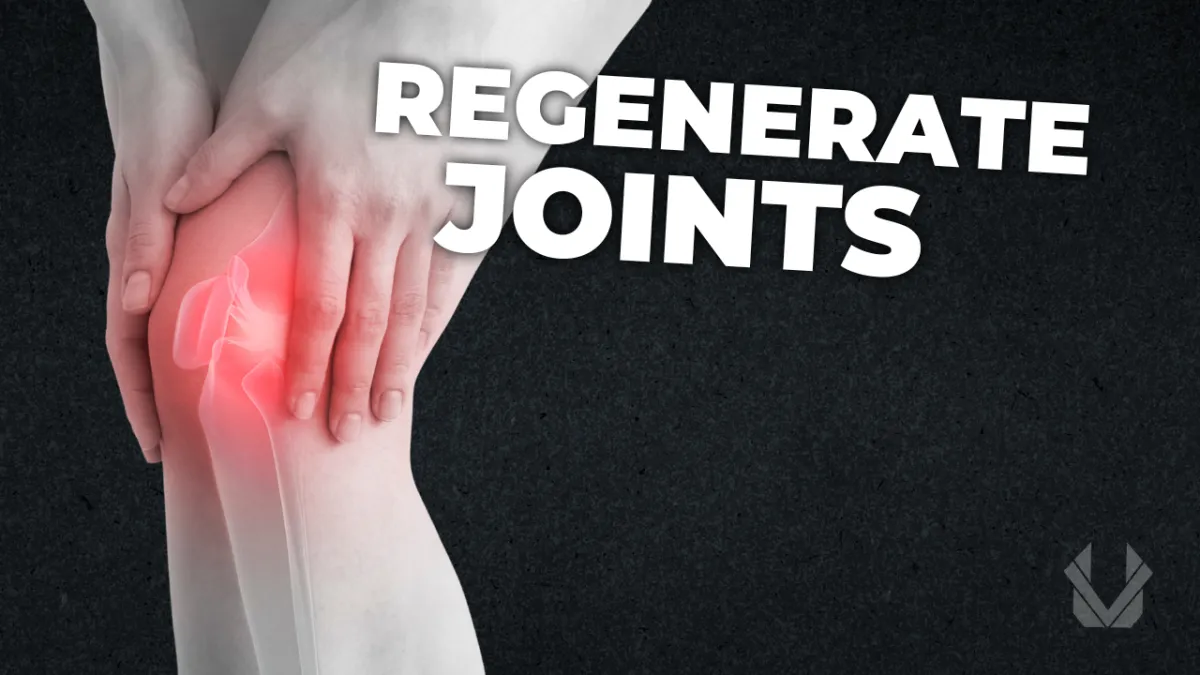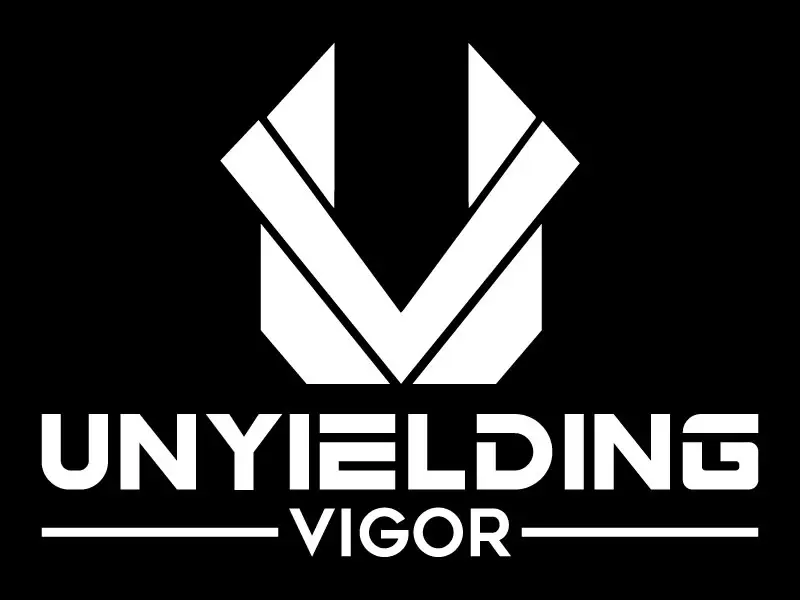THE UNYIELDING VIGOR BLOG
Our goal is to give you the most scientifically accurate and POWERFUL biological enhancement resources in the world
We're here to set new standards for truth, accuracy and effectiveness in the health industry. You'll find more value and scientific proof in our free articles than in most content you pay for.

Regenerate your joints
Introduction
We use our joints in our everyday lives, so to have optimal joint functioning is absolutely essential for all of us. Having healthy joints will help excel in our physical feats, while having damaged joints will take away from those goals and increase the chance of injury.
Brenden has suffered poor joint health, which he managed to improve drastically by implementing some of the methods and compounds mentioned in this blog.
Read this blog to discover how you too can obtain bulletproof joints and eradicate any joint issues.
Unraveling the Complexity of Cartilage
Cartilage consists of chondrocytes, specialized cells that play a crucial role in crafting and nurturing the extracellular matrix. This matrix is composed of collagen fibers, proteoglycans, and water molecules, giving cartilage its distinct strength and shock-absorbing properties ².
Chondroprogenitor cells are equally crucial players ³. These cells, a subset of mesenchymal stem cells, reside within cartilage. They possess the unique ability to transform into chondrocytes, contributing to cartilage regeneration. When cartilage undergoes damage, these cells play a role in repairing tissue.
Osteoblasts are another important element. Responsible for bone formation and remodeling, they impact bone health. The delicate balance between cartilage preservation and bone formation can be disrupted in conditions like osteoarthritis. This imbalance contributes to joint damage and degeneration ⁴, ⁵.
Unlocking the Potential of Joint Regeneration:
In conditions like arthritis, the regenerative potential of chondroprogenitor cells can be overshadowed by degenerative processes. Inflammatory factors, mechanical stress, and the natural aging process collectively hinder the performance of these cells, diminishing their capacity to effectively repair damaged cartilage. This disruption in balance results in cartilage depletion, leading to joint stiffness and persistent pain. However, the process of joint regeneration relies on stimulating chondroprogenitor cell activity. By addressing the factors that impede their function, we can enhance their ability to contribute to cartilage repair and alleviate the associated symptoms.
Growth Factors: Transforming Growth Factor-beta (TGF-β) ⁶ ⁷ ⁸ ⁹ Bone Morphogenetic Proteins (BMPs) ¹⁰, particularly BMP-7 ¹¹ ¹² ¹³ ¹⁴ ¹⁵, and Fibroblast Growth Factors (FGFs) ¹⁶ ¹⁷ ¹⁸ enhance chondroprogenitor cell proliferation and differentiation. These growth factors can be used through targeted interventions or bioengineering ¹⁹.
Extracellular Matrix (ECM) Components: The dynamic ECM influences cellular behavior and rejuvenation ²⁰ ²¹. ECM-based scaffolds mimic native tissue, promoting chondroprogenitor cell growth and differentiation ²² ²³. Growth factors enhance regenerative impact.
Stem Cell-Based Therapies: Mesenchymal stem cells (MSCs) rejuvenate chondroprogenitor cells ²⁴ ²⁵. MSCs from sources like bone marrow and adipose tissue are directed towards cartilage restoration ²⁶. Direct injections or encapsulation in biomaterials drive differentiation ²⁷ ²⁸. These pioneering approaches hold significant promise as innovative solutions to the challenges associated with cartilage degradation and compromised joint function.
While innovative strategies are in development, they're not yet widely available. We'll keep you informed as these advancements progress.
Cutting edge supplements for joint recovery
Collagen Peptides and Type 2 Collagen:
Collagen is a key protein providing cartilage with resilience and flexibility. Supplementing with collagen peptides, specifically type 2 collagen, can enhance joint well-being and cartilage function ²⁹. Type 2 collagen targets joint cartilage effectively ³⁰ ³¹. A brand that I personally lean towards is Vital Proteins.
Glucosamine Sulfate:
Glucosamine is vital for cartilage formation and preservation, impacting joint health through various mechanisms. It activates the wnt/beta-catenin pathway, vital for tissue repair ³². Glucosamine can also strengthen bones, supporting overall joint function ³³. It counteracts inflammation-related damage ³⁴.
A dose of 1.5g is beneficial, but higher doses may have risks on insulin sensitivity and reductions in insulin-like growth factor-1 (IGF-1) levels ³⁵. However, this higher dosage underscores the importance of adhering to appropriate dosing recommendations to achieve the desired benefits while minimizing potential risks.
Chondroitin:
Chondroitin, often combined with glucosamine, enhances joint health by relieving discomfort and improving functionality ³⁶ ³⁷ ³⁸.
Eggshell Membrane:
The eggshell membrane, a delicate film that covers the inside of an eggshell, contains a range of bioactive components, including Fibronectin, collagen, glycosaminoglycans (GAGs), hyaluronic acid, chondroitin sulfate, and glucosamine ³⁹. These elements collectively form essential building blocks for cartilage tissue ⁴⁰ ⁴¹. The synergistic interaction among these components may offer more robust benefits compared to individual supplements like glucosamine ⁴². Interestingly, some theoretical insights suggest that these bioactive compounds found in eggshell membrane could potentially modulate Asporin (ASPN), a molecule intricately involved in influencing cartilage's extracellular matrix ⁴⁹. Abnormal ASPN expression has been linked to compromised cartilage regeneration and susceptibility to osteoarthritis ⁵⁰. While there are currently no known ASPN inhibitors, the composition of eggshell membrane raises intriguing possibilities for its role in influencing the cartilage microenvironment. Brands like NOW have stepped into the spotlight with their dedication to quality and efficacy, offering a reliable option that harnesses the potential benefits of eggshell membrane.
Pentosan Polysulfate:
Pentosan polysulfate improves joint health by enhancing proteoglycan synthesis and promoting regeneration ⁴³. This enhancement is observed both in the presence and absence of interleukin-1 (IL-1), a key player in inflammatory processes, underscoring the compound's potential in managing joint-related concerns across various contexts. Moreover, pentosan polysulfate showcases its aptitude for stimulating the production of hyaluronan by synoviocytes ⁴⁴, cells integral to synovial fluid production and joint lubrication. It trans differentiates cells within cartilage ⁴⁵ ⁴⁶ ⁴⁷, offering a unique solution for cartilage repair ⁴⁸.
TB500 (Thymosin Beta-4):
TB500, TB500 enhances joint healing by promoting angiogenesis, collagen production, and curbing inflammation ⁵¹ ⁵² ⁵³ ⁵⁴ ⁵⁵ ⁵⁶ ⁵⁷.
Cutting-Edge Physical Rehabilitation Techniques
These methods, when integrated into your routine, support better joint health and a pain-free life. They are highly effective for rehabilitating joint injuries as they minimize mechanical stress and promote stretching, increased blood flow, and myokine stimulation. These elements collectively aid tissue repair and counteract specific inflammatory cytokines.
Proprioceptive Neuromuscular Facilitation (PNF)
Enhance flexibility, strength, coordination, and joint stability with PNF ⁵⁸ ⁵⁹. The "Contract-Relax" technique, effective for various joints, taps into reflexes for improved movement patterns ⁶⁰.
To perform this stretch:
For Hips:
Sit on the floor with your legs stretched out in front of you.
Push against an immovable object, such as a wall or the floor, for 6-10 seconds, contracting the targeted muscle group.
Relax the muscles and gradually move into a deeper stretch, holding it for 20-30 seconds.
Repeat this process for 2-3 sets.
For Shoulders:
Stand with your arms extended to the side.
Push against an immovable object, like a wall or a sturdy surface, for 6-10 seconds, engaging the targeted muscle group.
Relax the muscles and slowly move into a deeper stretch, maintaining it for 20-30 seconds.
Perform 2-3 sets of this exercise.
For Knees:
Sit on the floor with your legs extended straight out in front of you.
Push your leg against an immovable object (e.g., a wall or the floor) for 6-10 seconds, engaging the muscles around your knees.
Release the tension and gently ease into a deeper stretch, holding it for 20-30 seconds.
Repeat the process for 2-3 sets on each leg.
For Ankles:
Sit on the floor or stand up with your legs extended in front of you.
Push your foot against a fixed object (such as a wall or floor) for 6-10 seconds, activating the muscles surrounding your ankle.
Relax your foot and gradually move into a deeper stretch, holding it for 20-30 seconds.
Perform 2-3 sets for each ankle.
For Elbows:
Sit on a chair or stand with your arms extended out in front of you.
Push your forearm against a stable surface (like a wall or table) for 6-10 seconds, engaging the muscles around your elbow.
Allow your forearm to relax and gently move into a deepe
stretch, holding it for 20-30 seconds.
Repeat this process for 2-3 sets on each arm.
Integrate "Contract-Relax" stretches for enhanced joint mobility and coordination, contributing to joint health and an active lifestyle.
Aquatic Therapy
Pool-based aquatic therapy reduces joint impact ⁶³ ⁶⁴. Try ankle circles and leg swings for improved joint flexibility. Consider chlorine-free pools for optimal benefits as chlorinated pools possess the capability to cause a reduction in testosterone ⁶⁵.
Saunas
Sauna usage promotes joint health by increasing blood circulation, reducing inflammation, and inducing muscle relaxation. Irisin release supports disc regeneration ⁶⁶. Heat shock proteins and human growth hormone enhance cell repair and joint health ⁶⁷ ⁶⁸ ⁶⁹.
Blood flow restriction training
Blood flow restriction training is another technique that can significantly benefit joint health and recovery. This training method involves using specialized cuffs or bands to partially restrict blood flow during low-intensity exercises, inducing a localized stress response in the muscles without subjecting the joints to excessive strain. Consequently, it leads to enhanced muscular strength and size ⁷⁰ ⁷¹.
Alternative to blood flow restriction training
High-repetition training with light loads can also promote joint repair and recovery. While this might not be as effective as blood flow restriction training, it can still stimulate the muscles without causing significant joint stress. This stimulation triggers the release of myokines, which possess regenerative properties and can counteract certain inflammatory cytokines.
PRP Ultrasound
Platelet-Rich Plasma (PRP) therapy involves using a patient's own blood, which is then centrifuged to separate the platelet-rich plasma from other components. Platelets contain growth factors and cytokines that play a crucial role in tissue repair and regeneration ⁷² ⁷³ ⁷⁴ ⁷⁵ ⁷⁶.
Utilizing ultrasound guidance for PRP injections offers multiple advantages. Real-time visualization ensures accurate PRP placement, enhancing treatment effectiveness and minimizing complications. This precision enables better injury assessment and optimized treatment planning for personalized care.
PRP therapy aids disc healing by promoting tissue regeneration and reducing inflammation ⁷⁷ ⁷⁸.
Conclusion
Embrace cutting-edge techniques for joint health and rehabilitation, from PNF stretches to isometric exercises, aquatic therapy, saunas, blood flow restriction training, and PRP ultrasound. These advancements empower you to preserve joint health, recover from injuries, and lead an active, pain-free life. Unlock your joint's potential for a fulfilling and vibrant future.
Unleash Your Vigor and conquer Your Limits,
-Thomas Muldoon
GET OUR NEW, FREE TESTOSTERONE SUPPLEMENT GUIDE FOR 2024
Toxic Testosterone: The Hidden Health Risks of the 6 Most Common Testosterone Supplements
(Created and proven with the results of 107 scientific studies)

Unleash Your Vigor & Conquer Your Limits!
-Unyielding Vigor

